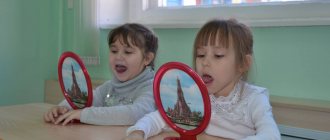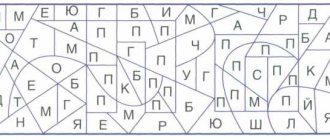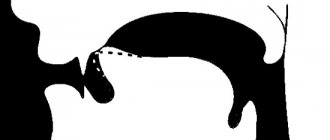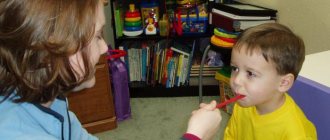Nowadays, many people show interest in their past, including the history of their family. Interest in this topic did not arise by chance: the idea of oneself as a person has changed. If earlier a person was part of a system, today he is, first of all, an individual. Therefore, the question of where I and my ancestors are from is very relevant.
You can, oddly enough, slightly lift the veil of secrecy by studying the rules of the Russian language and the letter “C”. Why, for example, is it written “Yeltsin”, but “Solzhenitsyn”, if, according to the rule, “I” follows “C”, with the exception of a few words. It’s simple: this law does not apply to the writing of surnames, since they were entered into the passport in accordance with the pronunciation that existed in the territory of the person’s residence. In Ukraine it was considered correct to write “TSI”, and in Russia - “CI”. From which it becomes clear where, whose ancestors are.
Sound and noise
The number of consonant letters in the Russian language is 21. One part of them is pronounced with the participation of voice and noise, and the other - only with the participation of noise. Accordingly, the first part refers to voiced consonants, and the second, accordingly, to voiceless consonants.
The next characteristic by which consonant letters are divided is hardness and softness, which depend on the vowel letter following the consonant in the syllable.
- If you try to shout out the letters: k, p, s, t, f, x, c, w, then you will have difficulties, since their articulation does not involve the participation of the voice: all these letters are voiceless. Elementary school teachers suggest memorizing the sentence: “Styopka, do you want some bacon? Fi!”, which contains the entire set of voiceless consonants. But they are wonderfully pronounced in a whisper.
- But you can easily shout out the letters: b, c, d, d, g, z, j, l, m, n, r, since their pronunciation involves sound vibrations formed by ligaments and changed through articulation. These are voiced consonants. But if you try to whisper them, you won’t succeed.
In colloquial speech, voiced and voiceless consonants can be pronounced almost identically: live - sew; goal - count; day is a shadow, but their meanings do not coincide.
Syllables starting with the sound “C”:
Automation of C in syllables should be carried out only after the child learns to pronounce this sound in isolation.
In order to make pronouncing syllables more fun, you can beat them with the help of walkers. You can find them on the website or via the dedicated link.
Automation of C in reverse syllables: AC – OC – OC UC – EC – AC EC – OC – AC UC – OC – AC YC – OC – OC EC – TC – OTs OC – AC – OC YC – EC – OC YC – EC – OC
Automation of the sound Ts in straight syllables: TSA – TSO – TSE TSI – TSO – TSY TSY – TSE – TSU TSA – TSU – TSO TSO – TSA – TSY TSY – TSO – TSA TSE – TSU – TSY TSU – TSE – TSO TSA – TSY – CO
Automation of C in the intervocalic position: ACA – OTSO – UTSU OTSO – YTSY – ETSE YTSY – ECE – ACA ITSY – UTSU – ATSA OTSO – ECE – UTSU ETSE – YTSY – ATSA ITSI – UTSU – ATSA UTSU – OTSO – ETSE YTSY – ECE – OSC
With a confluence of consonants: TsVE – TsVA – TsVO MTsA – MTsO – MTsU TsVU – TsVI – TsVI MTsY – MTsE – MTsE
When choosing words to automate the sound “C”, pay attention that these words do not contain sounds that the child pronounces incorrectly. For example, you need to exclude the words TSAREVICH, TSAREVNA, TSAR, if the child does not pronounce the sound “Рь”. This is necessary in order not to reinforce the incorrect pronunciation of a given sound.
Automating the sound “C” in syllables and words using visual aids will be most effective if the baby not only hears the word, but also sees it.
Pairs and "non-pairs"
It is necessary to find out whether the unvoiced letter “c” can be hard or soft. We have a group of unpaired letters. These are th, x, l, ts, m, ch, n, shch, r, some of which correspond to soft pairs, and some are only such consonant letters.
These are consonants called sonors in Russian: [й'], [л], [л'], [м], [м'], [н], [н'], [р], [р']. The upper palate takes part in their pronunciation.
There is no letter “c” among them.
The remaining part consists of letters whose pronunciation is associated with hissing: [x], [x'], [ts], [ch'], [sch']. Of these, one letter is paired according to the softness-hardness principle, two letters can only be soft - “ch” and “sch”, and the fourth letter does not have a pair according to softness, and is accordingly hard.
The question of whether the letter “ts” is soft or hard has been resolved: the hissing letter “ts” in Russian can only be hard.
Ways to make the sound “Ts”
There are several ways to set “C”. During the study process, the specialist selects speech therapy classes individually for each child.
- Production of “C” by imitation using game situations. Game “Don’t wake the baby”: put your finger to your mouth and say “Hush, hush, the baby is sleeping in her crib. Don’t wake him up, t-t-t-t-t!” Game “Feed the chicken!”: invite the child to repeat “Chicken, chicken, chicken, chicken!”
- The mechanical method is to use an auxiliary object. Often a teaspoon is used for these purposes. With its help, it is necessary to hold the tip of the tongue behind the teeth at the moment when the child tries to pronounce the sound “Ts”. In this case, the tongue should take the shape of a slide, its tip rests on the lower incisors, and the back touches the upper teeth and upper palate.
- Setting “C” from reference sounds. This method is used when a preschooler can pronounce the sounds “T” and “S”. The adult asks the child to use them quickly. Repeat this pronunciation several times.
The letter "C" and its pronunciation
So, the letter “C” does not form a pair, therefore, it refers to unpaired, voiceless consonant letters. If we look at the pronunciation of the letter “ts”, it turns out that it consists of two sounds: [t] and [s], which in total sounds like [ts]. In Russian, “ts” exists only in a hard form.
There are some minor differences in the pronunciation of words starting with the letter “c” in cases of its combination with the vowels [a], [o], [u] behind it, and with the vowels [e], [i]. In the syllables tsa, tso, tsu the letter “ts” sounds hard, and in the syllables tse, qi it sounds somewhat softer. The same applies to words in which these syllables are in the middle.
In some words that came to us from other languages, there is a double letter “c”, but this word is pronounced as if it only has one “c”. However, in such cases, the emphasis is placed on the sound [t] that makes up the letter “ts”. Let’s take the word that came to us from Italy, “pizzicato”: it should be pronounced not [pi,ts,tsicato], but [pi,t.sicato].
The pronunciation of words with a combination of the letters “t” and “c” (saints) follows the same principle.
"Sound T"
How to pronounce the sound Ts normally.
The sound Ts (in Russian transcription [ts]) is a consonant, deaf, hard. It is formed by merging the sounds [t] and [s] into a single sound. There are no sounds equivalent to it in terms of sonority and softness in the Russian language.
When pronouncing the sound [ts], the organs of articulation occupy the following position:
- the lips are slightly stretched in a smile, so that the upper and lower incisors are exposed;
- the teeth are brought together, forming a gap of 1-2 mm;
- the tip of the tongue is wide, located in the lower part of the lower front teeth;
- the lateral edges of the tongue are raised and tightly meet the upper lateral teeth;
- the back of the tongue in its front part closes tightly with the upper alveoli for a split second, as when pronouncing [t], after which it forms a narrow gap with them (v. alveoli) for the exit of a stream of air, as when pronouncing [s];
- the air stream is strong, jerky, passes through the middle of the tongue and when you bring the back of your hand to your mouth it feels cold;
- the soft palate is pressed tightly against the back wall of the pharynx, preventing air from escaping into the nose;
- vocal cords are open and do not form a voice.
Sound production methods
Method of setting
NO SOUND:
By imitation:
a) Tactile sensation: bring the back of the child’s hand to the speech therapist’s mouth, so that when the sound [ts] is quickly pronounced, he feels the blow of an air stream.
b) Do the exercises: “Fence” - “Window” “Bridge”. Place the tip of your tongue against your lower front teeth. The back of the tongue is arched and touches the upper front teeth. In order for the back of the tongue to better contact the palate, the lateral edges of the tongue are clamped with the teeth and remain clamped at the moment of inhalation and at the moment of exhalation, the tip of the tongue is free. After inhaling, exhale the air with a short strong push while simultaneously lifting the tip of the tongue from the lower front teeth. A stream of air passes through the middle of the tongue, the position of the teeth does not change, the lips are tense and stretched in a smile, i.e. the “Fence” position. A short sound [ts] is heard - “Grasshopper.”
c) The same, but without pinching the lateral edges of the tongue.
[Ts] – titmouse song, “Quiet, the children are noisy”
Let's try to make the sound [C] by imitation. Sit in front of the mirror. Take your baby's hand and bring it to your mouth. Say exaggeratedly with a strong exhalation: “Ts-ts-ts - …”. The child should feel the blows of cold air on his palm. Pay attention to the baby's correct position of the tongue and lips (they are slightly open in a smile). Let him copy all your actions and repeat: “Tsk-tsk-tsk -...”. It may take several repetitions or classes to get it right. Strengthen the result by repeating the syllables: tsa-tsa-tsa, tso-tso-tso, tsu-tsu-tsu, tsy-tsy-tsy, tset-tse-tse. When pronouncing these straight syllables, the lips must take the position of the following vowel sound. At the first stage, the pronunciation is still exaggerated and tense. But gradually everything will fall into place, and articulation will become effortless.
The child is offered a sample of sound pronunciation in combination with play images (a horse clicks its hooves, a girl asks not to make noise, etc.); At the same time, visual control of correct articulation and tactile (tactile) sensations are used.
From reference sound:
a) From the “Bridge” position, say in a row: “tss”, “tss”, “tss”, speeding up the tempo: “tss”, “tss”, “ts”.
b) From the “Shovel” position, bite the front part of the tongue in the syllable: “at” and blow, you get “at-s = ats”.
Mixed method:
Complete the exercises: “Fence” - “Window” “Bridge”. In the “Bridge” - “Fence” position, hold your tongue with a spatula, pronounce the sound [t] - biting the front part of the tongue with your teeth, and then pronounce [s]. At first these sounds are pronounced separately, and then together.
Note: when performing the sound [ts], the child is not called, but is replaced with the name of the exercise “Grasshopper”.
Since the position of the organs of articulation of the sounds “S” and “Ts” is very similar, the sound “Ts” is quite easily placed on the basis of the correctly pronounced sound “S”, but requires additional work with the tip of the tongue, since its movements when pronouncing all the mentioned sounds are very similar. Therefore, it is important to explain to the child the principle of operation of the tip of the tongue when pronouncing each individual letter, for greater clarity, resorting to comparing them.
As soon as the child begins to correctly pronounce the isolated sound “C”, it is necessary to immediately begin to automate it.
Setting [C] is possible only after the sound [s] has been corrected and entered into the child’s speech. Place [ts] from [t] with the tip of the tongue lowered to the lower incisors and the front part of the back of the tongue pressed against the upper incisors. The child is asked to pronounce [t] with a strong exhalation. At the same time, they pronounce [t] and [s] sequentially. To get a merged sound with a shortened whistling element, the child is asked to pronounce the reverse syllable with the vowel [a] (ats). When it is difficult to hold the tongue against the lower incisors, mechanical assistance is provided. Using probe No. 2, the speech therapist holds the tip of the tongue against the lower incisors and asks to pronounce [ta] with a strong exhalation (at the moment of exhalation, lightly press the tongue = [ts]).
With this sound, the teeth are exposed in a “smile”, brought together or closed. A stream of air goes simultaneously to the tip of the tongue and the front teeth. The tip of the tongue, resting against the lower teeth, rises sharply with its back to the sky and also sharply descends. The air stream is interrupted: a bow occurs. The air stream is jerkily applied to the front teeth. This can be felt on the back of your hand. The air stream is cold and rubs against the front teeth.
Now we try with the child to imitate the “burst” balloon: “T-ssss.” The sound “Ts” consists of two: “T” plus “S”. If the child pronounces these sounds correctly and easily, then this will not cause any difficulties. It is imperative to watch your “smile” - expose both the upper and lower teeth. The tip rests on the lower teeth. We teach the child to bow quickly. You can use the term “shoot”-ts-ts. The “S” sound does not last in this case. Like “T,” it is pronounced abruptly. But when our ball “bursts”, in this case we can pull “C”. This is done so that the child can better feel the flow of air and the sound itself.
It must be remembered that sometimes you can get the sound “S” from “C” when pronouncing it for a long time: C = T + Sssssss and we fix it separately.
When the child pronounces the sound “C” clearly and in isolation, we begin to automate it. If it doesn’t work out, then continue to imitate while playing.
When the child correctly pronounces the sound “C” in isolation, we begin to automate it.
It is better to automate this sound in words in which it is at the end.
We come up with sentences with these words.
We teach proverbs, riddles, and poems with the child.
From articulatory structure:
The child is asked to reproduce the articulatory pattern of sound, apply the correct air stream, and determine the presence/absence of a voice; the result should be a normalized sound.
11. Setting the sound [Ts] from art. "Reel" style
Invite the child to open his mouth, rest the tip of his tongue against the lower front incisors, and lift and bend the tongue so that the front part is pressed against the palate. The tongue touches the upper incisors with the back. Without turning on the voice, pronounce a sound that imitates the sound [T]. The sound is pronounced at the moment of opening, when the tip of the tongue bounces off the lower front teeth under the pressure of a strong air stream of exhaled air. The lips are tense and stretched into a smile. Definitely control with the palm of your hand.
Setting the sound [Ts] from the telephone exchange
The sound [C] is better placed in reverse syllables. The child is asked to pronounce the sound [T] with maximum exhalation. At the same time, the sounds [T] and [S] are pronounced sequentially. In this case, the sound [S] must be pronounced drawn out. Then the sound [A] is turned on, and the child is asked to pronounce the combination [ATS] with a strong exhalation at the moment of transition from [A] to [TS].
LABIODENTAL Sigmaticism
This time it is the lower lip that is showing disobedience. It is necessary to remove the labial articulation. This may be possible using your index finger. Use it to press the baby's lower lip to the base of the lower teeth (the finger should be placed horizontally). Hold your whim while the child pronounces forward and backward syllables with the sound [C]. After some time, your help will no longer be needed.
There is another way to combat this sigmatism. The baby shows a dazzling smile (the upper and lower teeth are visible). You fix the corners of your mouth with your thumb and forefinger: you need to keep that Hollywood glow for as long as possible! Without changing the position of his lips, the child, following you, pronounces the syllables: tsa-tsa-tsa, tsy-tsy-tsy, tset-tse-tse, ats-ats-ats, its-its-its, ts-ts-ts. As soon as the lower lip learns to behave decently, and the sound [Ts] sounds clearly, the “supports” are removed.
In Slavic languages
Unlike the Russian language, where the letter “ts” is always hard, the issue of the pairing of the letter “ts” in other Slavic languages, including Bulgarian, Belarusian or Ukrainian, is resolved differently. Here the letter “c” can be in both the “soft” and “hard” versions. The soft pronunciation of the "ts" in the words "pepper" or "bird" sounds like "pepper" and "bird". Surnames of Ukrainian origin can be easily identified by the same feature: they contain a soft letter “ts”, consisting of the sounds [ts,] (Katsyuba).
The combination of two soft sounds [t,s,] is increasingly transformed into one sound [t,]. This was especially evident in the Belarusian and Polish languages, where the letter “c” is pronounced as [t,].
Hard consonants
The question of whether the letter “ts” is soft or hard in the Russian language has been resolved unambiguously: the letters “zh”, “sh” and “ts” can only be hard.
The influence of the vowels adjacent to them does not matter: bird [ptitsa], king [tsar,], goal [tsel,]. In words starting with the letter “c”, the sound [ts] remains hard even when combined with vowels, which are “softeners” for consonants that have a “soft” pair: i, e, e, yu, i.
In relation to the letter “i”, which makes up a syllable with the letter “ts”, which is part of the root of the word, there is a rule that states that, despite the fact that in this case the sound [s] is heard instead of “i”, such a syllable is written as "qi": bacillus, shareholder, hyacinth, circus.
However, there are exceptions to this rule, which will be discussed below.
Articulation gymnastics
To make the sound “C”, it is necessary to pay special attention to special articulatory gymnastics. Exercises will be more effective if performed in front of a mirror. You need to start classes by warming up your tongue and lips.
You can invite your child to stretch his lips into a smile several times in a row and slap his lips with his tongue. It is better to start with easy exercises and gradually move on to more difficult ones.
Tongue exercises
- “Hamster”: rest your tongue on each cheek in turn and stay in this position for a while.
- “Pancakes”: stick out your tongue and place it on your upper lip in a relaxed state. Hold your tongue in this position for several seconds.
- “Painting the fence”: open your mouth, stretch your lips slightly. Use the tip of your tongue to move along the inside of the lower incisors up, down, and in different directions.
- “Slide”: arch your tongue upward. The tip of the tongue should rest against the lower teeth.
- “Eating jam”: with your mouth open, take out your tongue and lick your lower and upper lips in turn. The exercise should be performed by tensing the muscles of the tongue.
An exercise in which a child repeats words with the letter C after an adult.
For lips
- “Tube”: form your lips into a tube and hold them in a state of tension for a few seconds. Repeat the exercise 5-10 times.
- “Fence”: move your lips apart, exposing your teeth. The jaws are clenched. Stay in this position for 5 to 10 seconds.
To develop exhalation
- “Breeze”: place the tongue in a slide so that its tip rests against the lower teeth. Pass a stream of air along the tongue.
- “Pump”: insert the tip of the tongue between the teeth, while sharply opening them. The tongue must be forcefully returned to the teeth and at the same time a stream of air must be applied. When the exercise is performed correctly, a hard “T” sound is heard.
Combinations of vowels with “C”
The question of whether the letter “c” is soft or hard includes the rules for spelling it with the vowels a-ya, o-e, u-yu, e-e.
In words of Russian origin there are no combinations of the letter “ts” with the vowels i, e, yu, e. So, if we come across a syllable that includes “ts” and these vowels, then we can confidently say that we have a borrowed word: Caesar, Zurich, cephedrine, Qianling (Chinese).
Spelling of complex words is also possible with the inclusion of the syllables “tsya”, “tse”, “qiu”, “tse”, but in this case there is, as a rule, a syllable division: special∨electrode.
Sound C in reverse syllables
Pronounce syllables. Exercise “Listen, remember, repeat”
Ats-ots-uts-yts yats-yots-its-yts ats-yats-ots-yots
yts-uts-ots-ats yts-its-yots-yats yts-its-ots-ats
Game "Clapperboard" - clap your hands when you hear the sound C
T, s, c, sch, s, s, c, c t, h, c, s, h, c, etc.
Ats, he, ots, yts, ka, from, yats, yts, yav, yts, yas, from, uts, its, uch, us…….
Fighter, house, messenger, syringe, floor, yard, palace, seller, fool, life, kvass, ficus, blacksmith, bridge, bone, finger………..
Special cases
To fully study the question: is the letter “c” soft or hard, you should turn to its spelling with the vowel “s”.
The syllable “tsy” is written in special cases, which include:
- words: gypsy, chicken, tsyts, mtsyri and similar roots related to them;
- possessive adjectives containing the suffix “yn” after the root ending in “ts”: Lisitsyn, Kuritsyn. This rule does not apply to surnames: Vitsyn, Stanitsyn, Yeltsin;
- adjectives ending in “th” following a stem ending in the letter “c”: chubby, pale-faced;
- nouns, after the stem ending with the letter “c” there is the ending “y”: months, peppers, saints;
- surnames of Ukrainian etymology: Tsybin, Tsybulko;
- proper names of foreign origin: Qin, Wang Ci;
- derivative forms of the imperfective verb “to stsat”: stsysh, stsyt.
With the exception of the above points, the vowel letter “i” is written in combination with the letter “ts”.
Every letter has a riddle
So, as it turns out, the letter “c” is not so simple.
By the way, it is present in all canonical alphabets of the Slavs, listed as “tse”. In church literature and in the Old Church Slavonic language it was called “tsi”, and sometimes “tsi”.
The modern version of the spelling of this letter goes back to the Cyrillic alphabet. But where and how it appeared there is no longer possible to find out. One thing is clear: similar outlines of the letter “c” can be seen among the ancient Arameans, Jews and Ethiopians.









